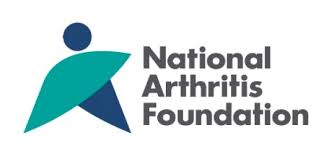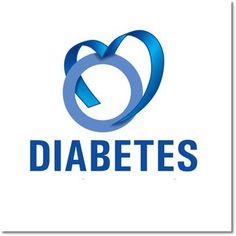HEALTH BENEFITS
We Need to Exercise!
Every time your turn around, someone is telling you about the benefits of exercise but after a while, it makes your head swim (no pun intended). The information can become too technical, what with VO2 max scores, oxygen consumption rates, and target heart rate calculations you can get completely lost! However one thing is clear, it is a good idea to exercise! Unfortunatley many people end up hurting themselves by starting an exercise regimen they are not ready for. Water-based exercise is an outstanding way to get (or stay) in shape, without the aches and pains land-based workouts can cause plus your chances of injury decrease significantly because up to 90% of your body weight is supported by water. Exercising in water, unlike on land, offers resistance in all directions, providing you with roughly twice the workout in half the time while simultaneously preventing you from overdoing it!
Note: At the bottom of this page is a link to an Adobe .pdf file of this guide in case you want to print it out or save it to read later.
What the Experts Say...
Mary E. Sanders, PhD, University of Nevada’s School of Medicine and Public Health, is known in fitness circles as “the water fitness guru.” The research her team has done with groups of aquatic exercisers over the years underscores the fact that water can be used as a liquid weight machine with many unique benefits.
Said Sanders:
“Water’s buoyancy reduces impact and supports the body for increased range of motion. The natural resistance of water (the harder you press the harder, the water presses back) provides an individualized personal training environment. Water’s viscosity or “thickness” – being about 800 times greater than air – makes it an effective exercise environment in which to build muscular endurance..”
When it comes to getting the most out of your exercise time, water just makes sense. Dr. Bruce E. Becker, Medical Director, St. Luke’s Rehabilitation Institute in Spokane, Washington, has studied the effects of aquatic activities among athletes and people in need of recovery from injuries or ailments for the past 30 years.
Dr. Becker said it best:
“Simply being submersed in water up to the neck increases cardiac output by more than 30 percent in a sedentary individual. So, just by sitting in water, the hydrostatic pressure on your body and being in a buoyant state benefits the body.” “Not only does swimming slow down the aging process – by upwards of 20% in some cases – in terms of respiration, muscle mass, bone density, cardiovascular activity and neurological function, but there’s also evidence to suggest that it increases mental health and even spiritual and social health.”

According to The Arthritis Foundation, in 2005 there were about 46 million people in the United States suffering from some form of arthritis pain. The Center for Disease Control reports that arthritis is a term used to describe more than 100 different conditions that affect joints and other parts of the body. The CDC states that arthritis is one of the most prevalent chronic health problems and the nation’s leading cause of disability. One out of five adults in the United States reports having doctor-diagnosed arthritis. Plus, as the population ages, the number of U.S. adults with arthritis is projected to increase to 64.9 million by 2030 (see Lethbridge – National Health Interview Survey, 2002. National Center for Health Statistics. Vital Health Stat 2004; 10; 222).
The Arthritis Foundation points out that moderate physical activity can improve your health without hurting your joints. And when that activity takes place in the inviting environment of warm water, any excess strain on your joints and muscles is greatly reduced. In addition, research concluded that hydrotherapy (i.e., exercise therapy, i.e., aquatic therapy) provides great relief for joint pain, resulting in improvements in physical performance and function. (This study involved people with osteoarthritis, in their knees or hips). Furthermore exercising in warm spa water you not only receive the numerous benefits associated with buoyancy and warm water, you also receive the therapeutic massaging effects provided by strategically placed adjustable massaging jets. Plus you can set the water temperature to whatever temperature you prefer - you decide when “the pool” is open and how the water is maintained. And you choose the kind of workout you want, from super-gentle to super-intensive, to anything in-between. And it’s all under your control. Of course, please consult your family doctor before beginning any exercise program.
According to the American Diabetes Association, there are 20.8 million adults and children in the United States, or about 7% of the population, who have diabetes. Of course, diabetes is the disease associated with abnormal blood glucose (sugar) levels. Studies show, the ADA reports, that physical activity of any kind can help control your blood glucose, blood pressure and blood cholesterol. Physical activity also reduces your risk for heart disease and stroke, relieves stress, and strengthens your heart, muscles and bones. In addition, regular activity improves blood circulation, helps insulin work better and keeps joints flexible.
One recent study by S. Lee (see Diabetes Care 28:895-901, 2005) showed that people can lower their chances of getting diabetes and related maladies by increasing the strength of
Getting enough sleep is vital to our overall health and well-being. Nevertheless, millions of people either do not get enough sleep or suffer from sleep-related problems. Surveys conducted by the National Sleep Foundation (NSF), an independent, nonprofit organization dedicated to improving public health and safety through sleep-related research, reveal that 60 percent of adults report having sleep problems at least a few nights a week. In addition, the NSF says that more than 40 percent of adults report daytime sleepiness severe enough to interfere with their daily activities at least a few days per month. It further states that millions of people struggle to stay
alert at home, in school, on the job and on the road. Tragically, the NSF claims that more than 100,000 police reported highway crashes, causing 71,000 injuries and 1,500 deaths each year in the United States alone, are attributed to sleep deprivation. The NSF states that exercise can be a boon for good sleep, especially when done regularly. It also says that people who exercise may take less time to fall asleep than people who don't. Some studies, the NSF reports, suggest that soaking in hot water (such as a hot tub or bath) before retiring can ease the transition into deeper sleep.
Researchers say that this may be due to the body's "temperature shift," the period when a person's core body temperature automatically drops after leaving a source of warm or hot water. They believe this may signal the body that it's time to fall asleep. Water is also thought to promote sleep through the inherently relaxing properties of buoyancy, which relieves pressure on joints and muscles and creates the sensation of weightlessness. However water may help induce sleep, the process and outcome represents a natural remedy, unlike the use (or overuse) of sleeping aids such as prescription drugs, over-the-counter medications and/or alcohol – all which can make you feel groggy, give you headaches or have other adverse side effects.
A recent study called “Effects of Aquatic Exercise and Walking in Sedentary Obese Women” published in the International Journal of Aquatic Research and Education, Feb. 2007, examined the effects of an aquatic walking exercise program on weight loss compared to landbased walking. Study results for both groups found that total body weight, cardio/respiratory fitness, flexibility, strength and health related quality of life significantly improved. For the aquatic walking group, however, the researchers reported slightly higher body weight losses, improvements in flexibility and higher attendance rates. Subjects also reported significantly higher enjoyment scores in the aquatic walking group compared to the land-based walkers.
According to the American College of Sports Medicine, ACSM, 60 to 80 percent of the population in North America will suffer from back pain or injuries at some point during their lives, with one out of five people suffering chronic back pain that lasts six months or longer. ACSM also reports that back pain is the most frequent cause of what it calls “activity limitation” among those under 45. Although 80 to 90 percent of individuals will recover from back pain within three to six days of injury, it says, it’s estimated that an average of $30 million annually is spent on doctor office visits for back pain, but that only three percent of the total cost goes to back pain prevention.
Compared to land, water substantially reduces the weight-bearing effects of gravity on the lower extremities and spine. As a result, back pain can be significantly reduced. With AFS, the pain can be further reduced by the turbulence of water that’s churned up by numerous built-in massage jets. The overall pain cycle is interrupted by offloading the spine and buffeting the
Weight Management
Back Pain Relief
According to the National Institute of Mental Health (NIMH), in any given year, almost 10 percent of the population, or about 20.9 million American adults, suffer from a depressive illness. The economic cost for the disorder is high, but the cost in human suffering can’t be estimated. Depressive illnesses often interfere with normal functioning and cause pain and suffering not only to those with the disorder but also to family, friends and co-workers. Most people with a depressive illness don’t seek treatment although the great majority can be helped through medications and/or psychological assistance such as cognitive/behavioral therapy. But exercise can help as well. One of the best sources for scientific literature on how exercise
Depression
can positively impact one’s mental health is called “The Influence of Exercise on Mental Health” by Dr. Daniel M. Landers, PhD in Exercise Science and Physical Education, Arizona State University, originally published in the Research Digest as Series 2, Number 12, the President’s Council on Physical Fitness and Sports. Here is Dr. Landers’ key conclusion from his review of the massive scientific literature on the topic of exercise and mental health: “There is now ample evidence that a definite relationship exists between exercise and improved mental health. This is particularly evident in the case of a reduction of anxiety and depression.”
Prenatal Health
A massive study published in the Journal of Prenatal Education (2003 Winter; 12 (1): 6–17) reported that aquatic exercise during pregnancy benefits the mother and baby. The researchers reviewed more than 40 scientific studies on the subject and drew the following conclusions, presented in their inimitable science-speak:
1. Psychological stress increases the prevalence of adverse fetal outcome, aquatic exercise may reduce psychological stress and, thus, reduce adverse fetal outcome.
2. Aquatic exercise in pregnancy has not been shown to be associated with adverse fetal outcomes and appears to provide some benefit to the fetus.
body’s soft tissue with moving water. A study published in the Clinical Journal of Pain byGerhard Strauss-Blasche, PhD, September/October, 2002, provides evidence for the efficacy of exercise therapy for those suffering from chronic back pain.

Water – especially warm water – is a safe, ideal medium for relieving arthritis pain and stiffness. That's why the Arthritis Foundation created a program, based on water immersion, that not only relieves stiff joints and associated pain, but keeps them moving, increasing their range of motion and maintaining or building muscle strength.

the heart and lungs. A total of 297 men were studied at Queens University in Kingston, Ontario, Canada, and the Cooper Clinic in Dallas, Texas. The study found that men with fit heart and lungs had a lower chance of getting diabetes or conditions related to diabetes, even if overweight. They had lower blood pressure, lower triglycerides and higher HDL, the “good” cholesterol. Researchers found that by increasing the strength of their heart and lungs, people can lower their risk of getting deadly diseases by an amazing 44%.
Enhanced Sleep

HEALTH BENEFITS GUIDE
SPAS · HOT TUBS · SWIMSPAS

Buyers
Guide
Spa Water
Guide
Swimspa
Guide
Instalation
Guide
Health
Guide
FAQ's
Home
